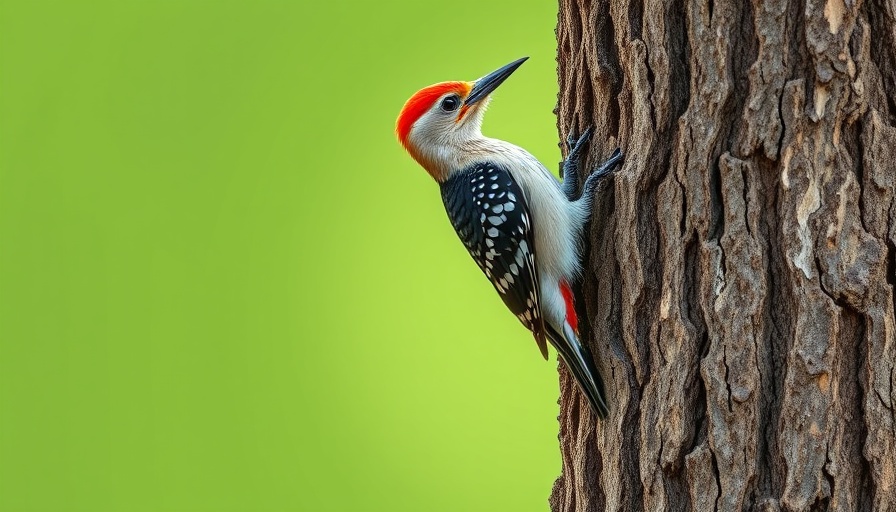
Understanding the Arizona Woodpecker: A Border Bird
The Arizona Woodpecker (Picoides arizonae) is a unique bird species that thrives across the mountainous regions of Mexico and extends into the southeastern United States. This small woodpecker has brown plumage with striking white underparts and distinctive markings on its face, allowing it to stand out from other woodpeckers in North America. While many woodpeckers are characterized by their black and white patterns, the Arizona Woodpecker's predominantly brown color scheme adds diversity to the avian population.
Special Habitat: Sierra Madre and Beyond
Found primarily in the Sierra Madre Occidental, the Arizona Woodpecker inhabits mid-elevation pine and oak forests, sharing its territory with vibrant species such as the Elegant Trogon and Blue-throated Hummingbirds. Their habitat preferences underscore the ecological significance of pine-oak woodlands, which sustain a rich array of wildlife. According to Birds of the World, these woodlands are vital not only for the woodpecker but for other species reliant on these specific ecosystems.
A Unique Foraging Technique
The Arizona Woodpecker possesses a distinctive foraging method that sets it apart; instead of the typical jackrabbit movements associated with woodpeckers, it flies to the base of a tree and spirals upwards as it searches for insects. This behavior not only showcases its agility but also enhances its ability to catch flying insects during mid-air sallying. Such skills are critical to their diet, which mainly consists of wood-boring beetles and other insects.
Quirky Courtship Displays
The courtship rituals of the Arizona Woodpecker are as fascinating as its habitat and foraging. The males perform a unique gliding flight display, which they liken to becoming a "paper airplane" as they glide towards potential mates. This whimsical behavior, alongside their rhythmic drumming and gliding, highlights the importance of visual displays in the bird's mating strategy. During nesting, the male keeps the female informed about progress by tapping on the nest tree.
The Challenge of Habitat Preservation
Although currently listed as a species of Least Concern, the Arizona Woodpecker faces challenges due to habitat loss driven by deforestation and climate change. Preservation of their pine-oak woodland habitat is crucial for their survival. Conservation efforts thus focus on managing these ecosystems effectively, ensuring the future of not only the Arizona Woodpecker but also the myriad of other life forms that depend on the same environments.
This enchanting bird serves as a reminder of how vulnerable ecosystems can be. Whether you are an avid birdwatcher or an environmental enthusiast, understanding the Arizona Woodpecker’s behaviors and habitat preferences enriches our appreciation of nature's diversity.
 Add Row
Add Row  Add
Add 




Write A Comment